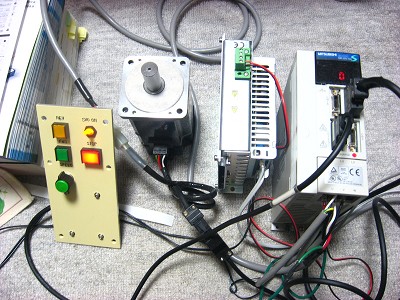 |
1. Test run of the new servo motor. |
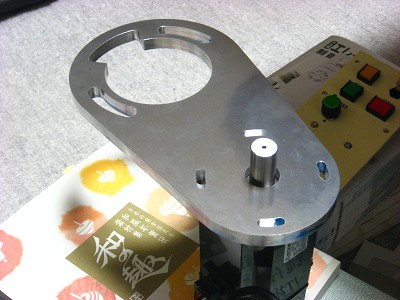 |
2. Bracket for motor mounting. The material is hard aluminum, 12 mm thick.
The angle of the bracket and servo motor can both be adjusted. |
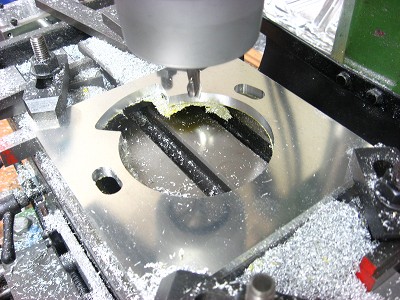 |
3. Machining the spacer. Movie of milling process The spacer is mounted under the motor mounting bracket, but it is difficult to see in the photographs. |
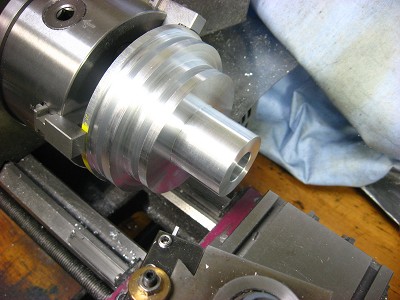 |
4. Machining the servo motor pulley. The larger pulley has a diameter of 105 mm. |
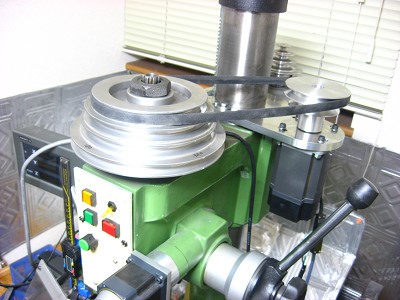 |
5. All parts are assembled. The original safety cover was removed. |
 |
6. Size of servo motor compared with original equipment three-phase motor. The motor on the back side is a three-phase motor of 1.5Kw driven with the inverter. The difference between the size of the servo motor and an original motor can be seen. |
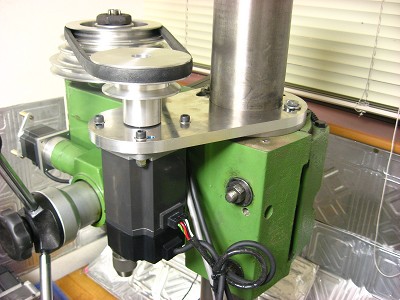 |
7. The 3-phase motor has been removed. The motor position is designed so that the fixed screw of the column can be turned. |
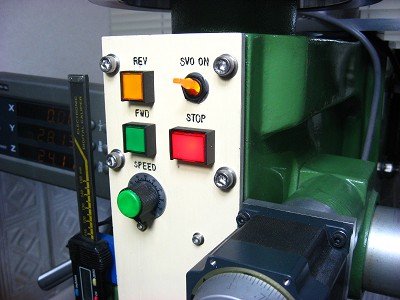 |
8. The servo motor control panel is mounted on the front of the mill head. Forward, reverse, stop, servo-on switches and speed control volume are on the panel. |
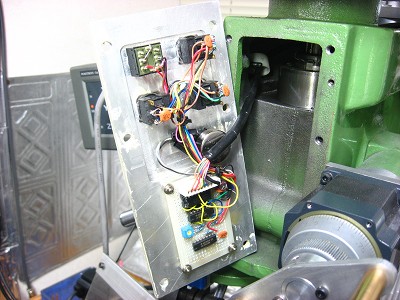 |
9. A back view of the control panel. It has a small digital circuit for sending the motor on-off signal to the servo control unit. |
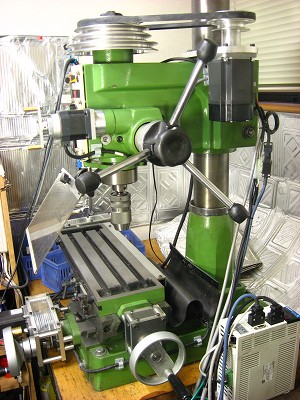 |
10. Completed I am very satisfied with the result. |
|
|
|